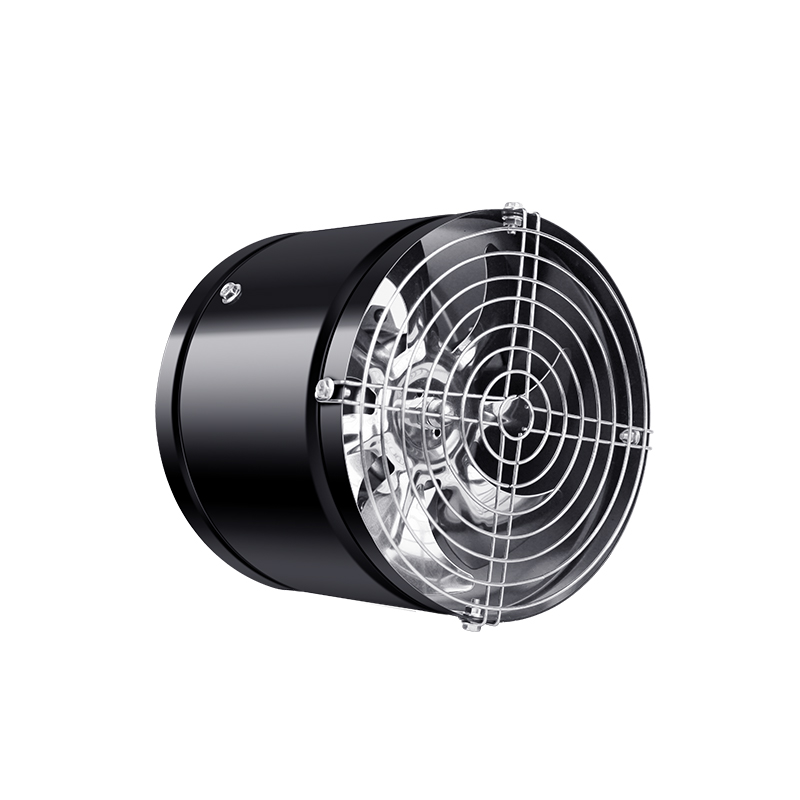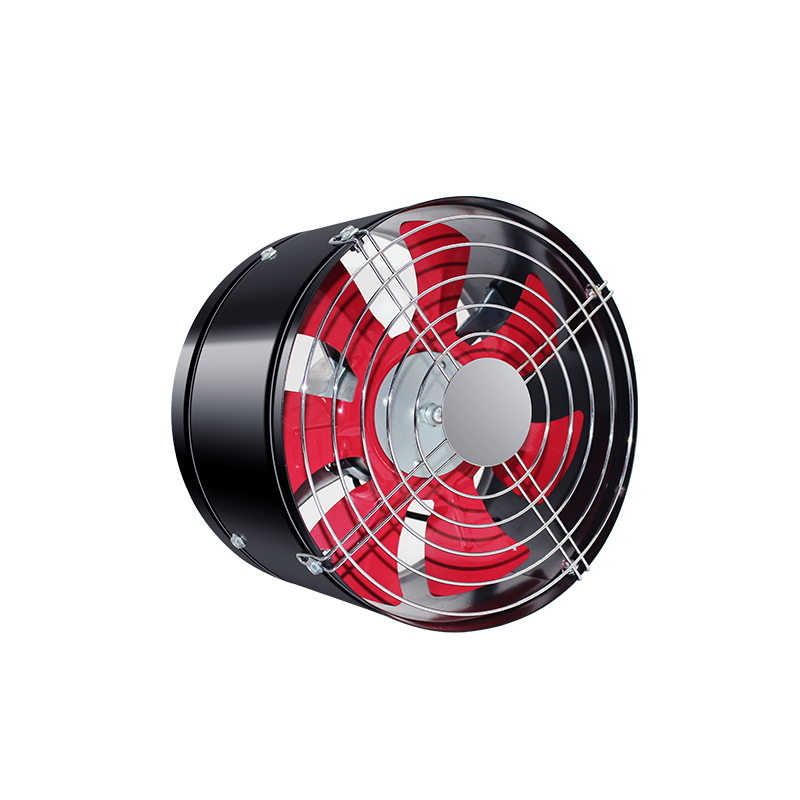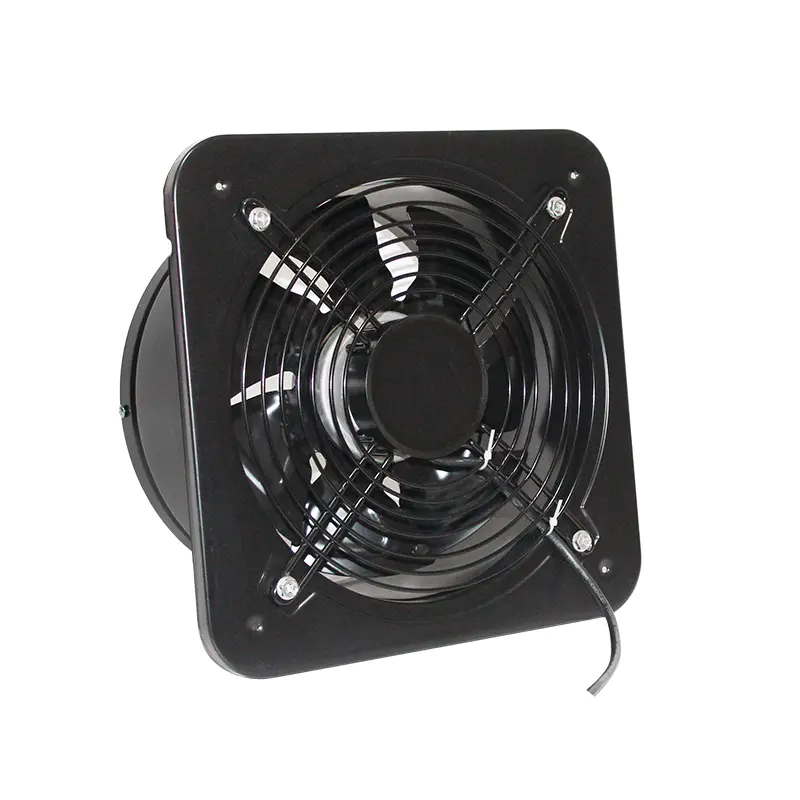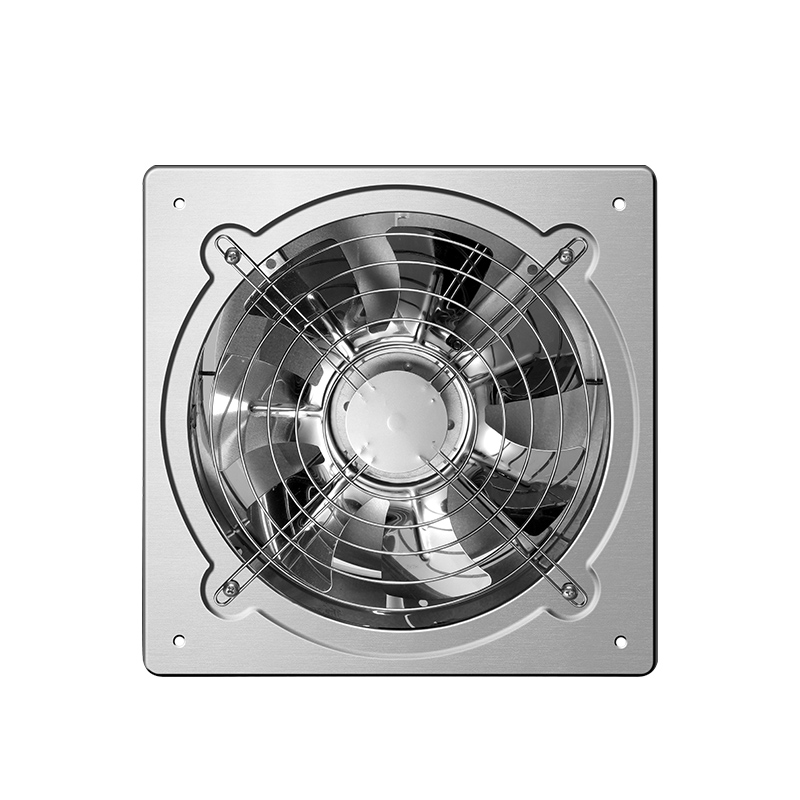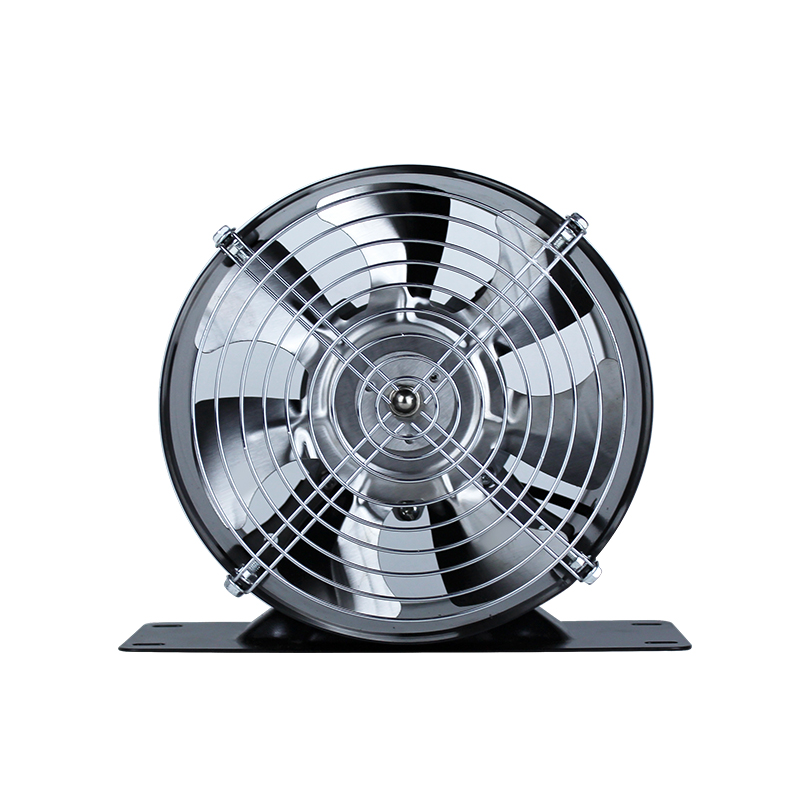News
How to Reduce Axial Flow Fan Noise? A Professional Noise Reduction Guide
In industrial ventilation systems, noise issues from axial flow ventilation fans not only affect work environment comfort but may also indicate equipment failure. This article will delve into the mechanisms that cause axial flow fan noise and provide comprehensive axial fan noise reduction techniques, from design and installation to maintenance, to help you create a quieter and more productive work environment.
Understanding the Sources of Axial Flow Fan Noise
Effective noise control begins with accurately identifying its source. Axial flow fan noise can be categorized into two main types, and understanding these basic mechanisms is the foundation for effective industrial fan noise control.
- Broadband noise: Caused by air turbulence, with a wide frequency distribution
- Discrete frequency noise: Noise with a specific frequency related to the blade rotation frequency
- Mechanical noise: Caused by the vibration of mechanical components such as bearings and motors
Aerodynamic noise: Analysis of major noise sources
Aerodynamic noise is the most significant noise contributor to axial flow ventilation fans, accounting for approximately 70%-80% of the overall noise level. This noise is primarily caused by the interaction between the blades and the air, and is particularly noticeable at high flow rates and under unbalanced conditions.
- Vortex noise caused by blade tip vortices
- Stall noise caused by airflow separation
- Turbulence noise caused by uneven inlet flow
Mechanical noise: Vibration and component wear
Mechanical noise often indicates potential equipment problems. Accurate diagnosis and timely repair are key to resolving causes of axial fan vibration and can effectively prevent the problem from worsening.
- Worn or inadequate bearing lubrication
- Vibration caused by rotor imbalance
- Loose or improperly installed components
Five Effective Noise Reduction Strategies
Axial fan noise levels can be significantly reduced through a systematic approach. The following strategies combine engineering design and O&M practices to provide solutions for different types of noise issues.
Optimizing Fan Selection and System Design
Selecting the right fan model early in a project is the most cost-effective way to control noise. Pay attention to the fan's axial fan sound pressure level parameter and select a product that offers low noise at the target operating point.
- Select a large-diameter, low-speed fan model
- Ensure the fan operates near its peak efficiency
- Optimize inlet and outlet duct design to reduce airflow disturbance
Improve installation and vibration control
Proper installation practices are crucial for achieving a quiet axial flow fan installation. Proper vibration isolation can prevent structure-borne noise and significantly improve the overall acoustic environment.
| Installation Elements | Recommended Practices | Noise Reduction Effect |
| Foundation Design | Use heavy concrete foundations | Reduce structure-borne noise |
| Vibration Isolators | Install rubber or spring isolators | Isolate mechanical vibrations |
| Flexible Connections | Use canvas or rubber flexible joints | Prevent vibration from being transferred to the ductwork |
Use Mufflers and Sound Enclosures
For existing systems, adding silencers is an effective retrofit solution. Mufflers reduce airborne noise through sound-absorbing materials, while sound enclosures create a physical barrier to prevent noise from spreading.
- Inlet muffler: Reduces inlet aerodynamic noise.
- Outlet muffler: Treats outlet airflow noise.
- Fully enclosed soundproof enclosure: Suitable for use in high-noise environments.
Regular maintenance and balancing
Preventive maintenance is crucial for maintaining low-noise operation. Establishing a regular inspection and maintenance system can effectively prevent noise increases due to equipment deterioration.
- Monthly inspection of blade fouling.
- Quarterly inspection of bearing condition and lubrication.
- Annual rotor dynamic balancing.
Operational optimization and speed control
Significant noise reduction can be achieved by optimizing operating parameters. According to fan laws, noise levels are proportional to the fifth power of speed. Even a small reduction in speed can significantly improve noise levels.
| Speed Reduction | Air Volume Change | Noise Reduction |
| 10% | 10% Reduction | 2-3 dBA |
| 20% | 20% Reduction | 4-6 dBA |
Noise Control Solutions in Industrial Environments
Implementing comprehensive industrial fan noise control in industrial environments requires a systematic approach. Shengzhou Qiantai Electric Appliance Co., Ltd., leveraging its strong technological innovation capabilities, provides customers with comprehensive solutions from fan selection and system design to noise reduction measures. The company's advanced production and testing equipment ensures that every fan undergoes rigorous performance testing, including noise level testing, creating value for customers while contributing to the development of China's fan industry.
FAQ
What is the noise standard for axial flow fans?
Different countries and industries have different standards for fan noise. Generally speaking, the noise level of industrial axial flow fans ranges from 75-90 dBA, depending on the fan size, speed, and power. When selecting a fan, you should refer to the manufacturer's axial fan sound pressure level data and ensure compliance with local environmental regulations.
How do I measure the noise level of an axial flow fan?
Accurately measuring fan noise requires a sound level meter that complies with the IEC 61672 standard. Measurements should be conducted in an environment where the background noise level is at least 10 dBA lower than the noise being measured. The measurement point should be 1 meter from the fan inlet or outlet, at a 45-degree angle to the fan axis. To obtain comprehensive data, it is recommended to measure under different operating conditions.
Does the number of blades affect fan noise?
Yes, the number of blades significantly affects the noise characteristics. Generally speaking, fans with more blades can run at lower speeds at the same air volume, thereby reducing noise levels. However, the choice of blade number requires a comprehensive consideration of efficiency, cost, and space constraints, and the optimal design requires a balance between multiple factors.
When is it necessary to replace a fan to reduce noise?
Replacement may be a more economical option when the existing fan is in the following situations: the fan is nearing the end of its service life and maintenance costs exceed the investment in new equipment; the existing fan is seriously inappropriately selected and cannot be met through modification; or new technology can provide significant improvements in energy efficiency and noise. Professional manufacturers can provide quiet axial flow fan installation and selection guidance to help you make the best decision.


 English
English 中文简体
中文简体
